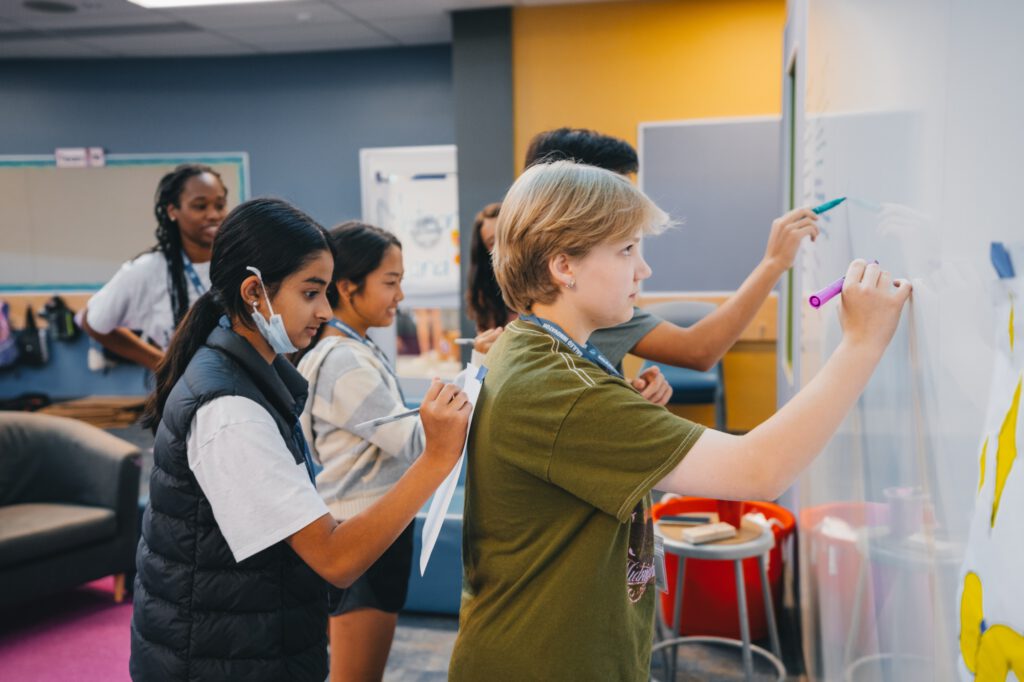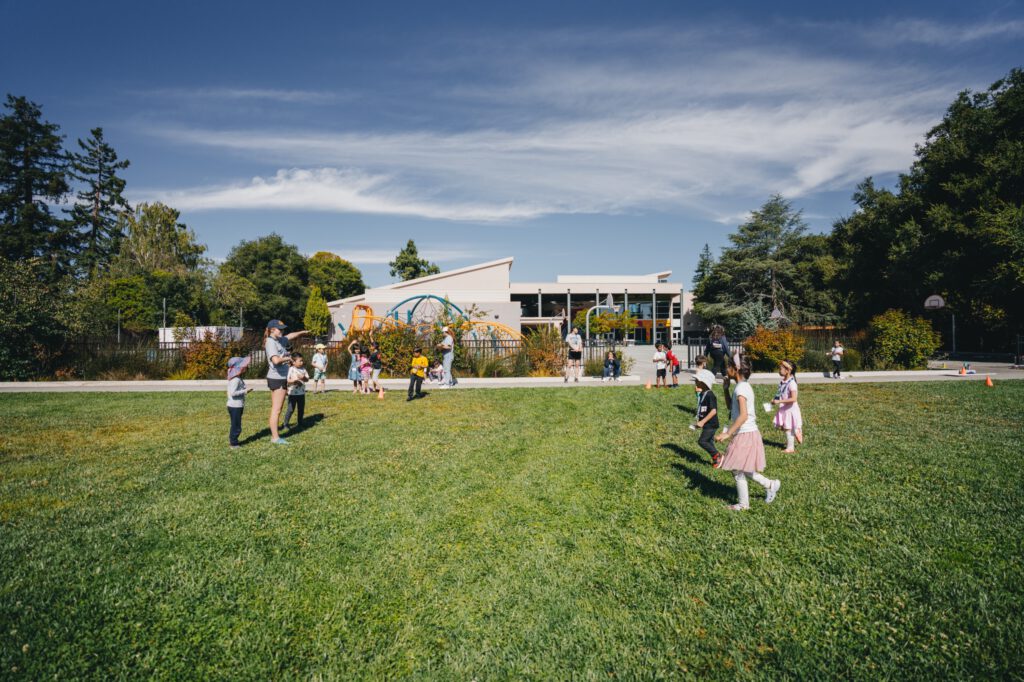Recently, two kids decided that they wanted to hang a birdfeeder outside, only to find the next day that it has been knocked to the ground. It seemed that a hungry local squirrel had gotten to it before the birds did! The kids returned a few hours later with a modified feeder, which they balanced carefully to avoid spilling the seed. They then hung it from the same branch. Alas, the scene repeated itself the following day as they once again retrieved an empty feeder from the ground. Putting their heads together, they decide that they needed to place the feeder in a new location, farther from the lamp pole, which that wily squirrel was using as a springboard to the feeder. So they placed the feeder on a tree far from the pole and there it hung for the remainder of the winter, undisturbed by that pesky squirrel. Their persistence paid off.
Working together and employing ingenuity and logic, these kids made multiple attempts, varying structure and location, until they succeeded in finding a way to help the birds survive the winter. What they were really utilizing was successful design thinking. With the world changing rapidly and our educational system scrambling to keep up, the emphasis has shifted to helping kids learn to locate and process information. Equipping kids with strategies to solve problems and tackle challenges is preparation for a dynamic future. Design thinking is a practical, solutions-oriented tool that kids can really use. Its principles also happen to drive some of the most innovative summer camp programs in the country.
What Exactly is Design Thinking?
Some schools have opted to teach design thinking as part of their curriculum for the 21st century. Though the term has only recently crept into our collective consciousness, it is not a new concept. Design thinking, in some iteration, has been used throughout the ages by inventors, innovators, philosophers and scholars to address problems and pave the way for creative solutions. We hear it used in the context of the arts and of engineering. We hear it in the corporate world. As a cornerstone of modern innovation, it has applications for both digital design and physical construction. But what does it entail, and what does it have to do with summer camp?
Design thinking describes a method used to solve complex or challenging problems. Its use is second nature to creative types like artists, architects and graphic designers. But it also has applications in scientific fields for engineers, inventors and IT professionals. Design thinking is not one specific algorithm, but more of a framework, a series of steps to process an idea and systematically bring it from vision to reality. The steps may vary depending on the users and the context.
The Steps of Design Thinking
Though some variation exists, these are the fundamentals of design thinking:
- Empathize – this is the WHO: identify with people; know the target audience and understand their position
- Define – the WHAT: the challenge is articulated, and an actionable statement is established
- Ideate – the HOW: ideas are generated without limitations; imaginations are engaged and brainstorming occurs; thinking is wide
- Prototype – the trial and error space: mockups that are created may or may not be fully functional
- Test – applying the proposed solution in context; trying it out and gathering feedback
At each step along the way, there is collaboration, critical thinking and plenty of focused discussion.
Successful innovation depends on channeling curiosity and harnessing creativity to bring about change. Kids arrive in the world full of curiosity and creativity. With the proper encouragement, these characteristics can help them find their passions and establish purpose. Tony Wagner, author of Creating Innovators: The Making of Young People Who Will Change the World, says that play, passion and purpose are the forces that drive young innovators. Whether striving to perfect an ambitious invention, constructing an elaborate visual arts project or orchestrating a complex digital environment, they will be excited to bring their ideas to life.
Design Thinking as an Approach to Challenge
So now that you know what design thinking is, what does it have to do with summer camp? An innovation summer camp is a place where passion and play meet purpose. Through authentic, real-world problems, kids can learn to apply design thinking, even at an early age, to things that have meaning to them. The steps break the process down, so their ideas can take shape. Innovation and makerspace challenges prompt kids to practice systems and adopt mindsets that will benefit them long after camp has ended. And once they have these tools in their belt they can then apply them to the world at large.
Consider some ways kids practice design thinking at camp:
- With their exploration crew, campers set a goal to produce the optimal tires to help the landing rover safely negotiate the terrain on Mars
- Participants generate ideas for characters, environments and special effects. They are limited only by their imaginations. Then, they work to translate these ideas into reality, making 3D-rendered models for their own film or video game
- Kids design their own roadside diner, complete with a three-dimensional neon sign and oversized food sculpture for the roof
- Campers practice painting, cutting and construction techniques as they create spinning solar system models
- Kids use veterinary science to test suturing and diagnostic skills as they examine live specimens
Problem-solving and invention are complex processes. To promote efficiency, a basic system can help. That’s where design thinking comes in. As a proactive concept, it is a solution-oriented approach. All participants negotiate similar steps and use a common language. They support each other, tackling problems through a collaborative process.
Introducing Your Child to Design Thinking
Design thinking is a collaborative framework that channels creativity. At Camp Galileo, the Galileo Innovation Approach® sets a foundation and guides kids through the design process. Inspired by design thinking at the Stanford d.school, Galileo has adapted the process for young innovators in pre-K through 8th grade. The GIA breaks design thinking down into kid-friendly steps, and each week-long camp experience gives campers the opportunity to implement the entire process, from start to finish. Throughout the week, kids are exposed to supportive mindsets and provided the resources to make it happen.
A camp experience that incorporates design thinking is incredibly valuable for kids. They walk away from camp with new tools and the increased confidence that is necessary for tackling complex problems. Both creativity and curiosity can be satisfied, and confidence in the power of imagination can grow.
Discover the wide-ranging applications of design thinking at different Galileo innovation camps, like the renowned Berkeley summer camp, which is one of our most popular camps in the San Francisco Bay Area. Explore our other offerings such as Southern California summer camps, Chicagoland summer camps, Seattle summer camps, and Denver summer camps. Stay engaged with our camp events and innovation resources by joining our mailing list. For further information about Galileo camps, feel free to get in touch with us here.





